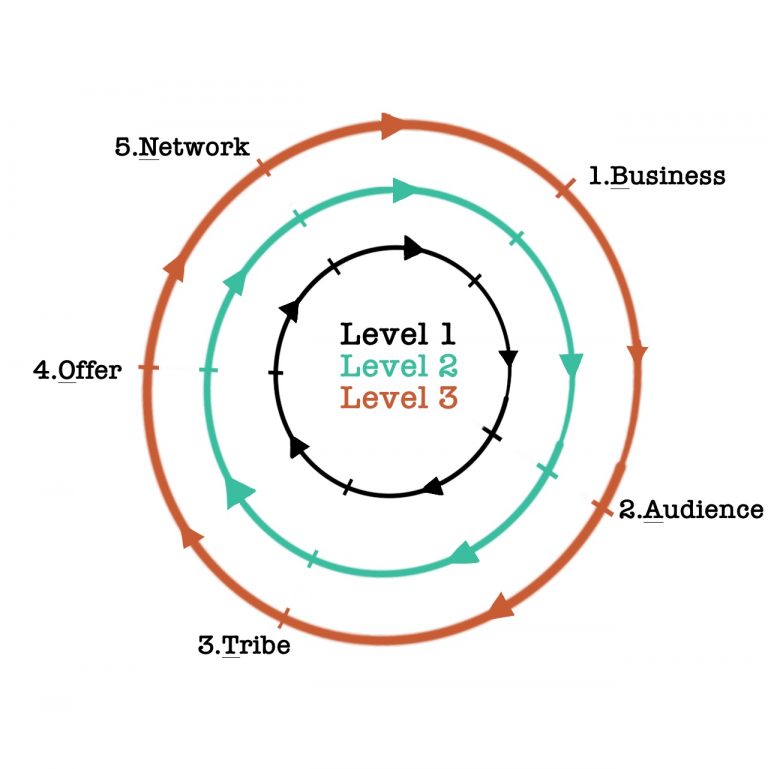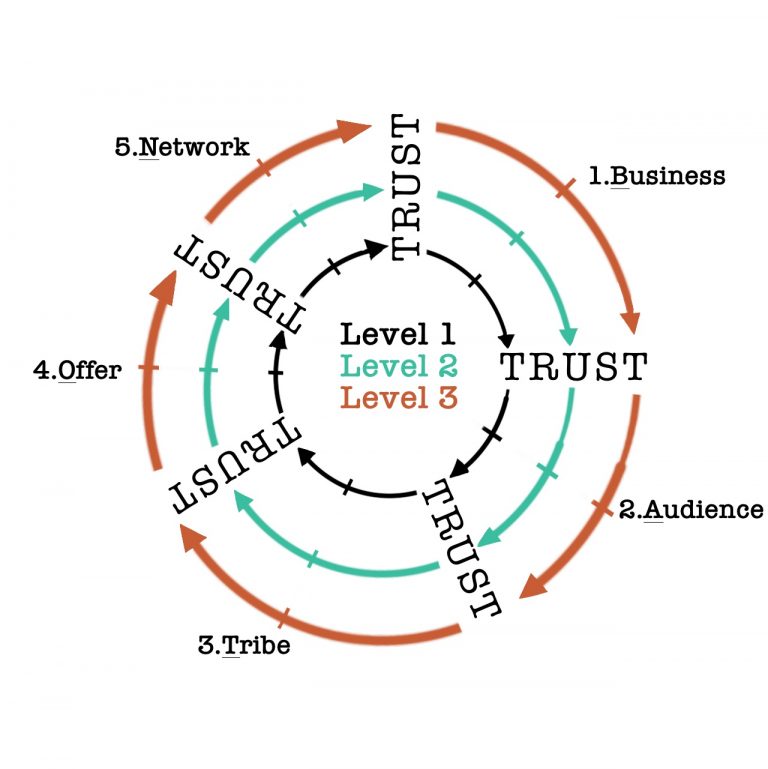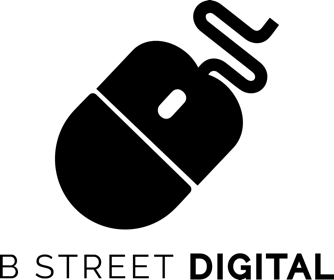Learn about the unique digital marketing system our clients benefit from
Each of these functions is common to any business when they are marketing a product or service as part of a viable business model.
Business and Network are more in-depth functions as most businesses are either established or in a start-up phase.
Therefore, strategies on business models and scaling the business will be bespoke to them.
There is no need to read through the entire guide as you can skip through to the sections which interest you the most.
Whether you are wanting to understand why we use BATON or the specific tools we use within each function to create positive results for clients, simply skip to the relevant section.
- What is the BATON model?
- What are the 5 functions of the BATON model?
- What are the 3 levels of the BATON system?
- Why can’t we jump straight to Offer?
- What are the benefits of using BATON as a system?
- How is it used for a business or client?
- Is it applicable to every business?
- A reminder of what has been covered in this guide
- Thank you for reading this guide
- What tools do we use at each BATON function?
- BATON system
An appropriate analogy for the BATON model is a literal passing of a baton through a 400 metre relay race, where each of the runners represents a business marketing function.
The model therefore represents taking a viable product or service (Business) to the stage of transacting with your customers (Offer) and then scaling it, where appropriate (Network), resulting in revenue for the business. This is done successfully by marketing effectively through all 5 functions, in the order of BATON.
The diagram below simplifies the movement between each of the 5 business functions and introduces the 3 levels of the BATON model.

And that is the extent of the complexity of the BATON model. There are 5 functions and 3 levels.
The 5 functions of BATON can be broken down into:
Business – creating a product or service people want or need
Audience – attracting attention to your product or service
Tribe – establishing demand for your product or service
Offer – selling your product or service to your tribe
Network – scaling the business to increase revenue
It is important to understand that if you are reading this guide as an established business having sold a product or service for many years, then naturally you have a viable business. When we do research and analysis for you, we would look for horizontal or vertical scalability of your product or service.
The same applies for any of the functions. There is always another level to take the marketing to either through a new strategy or by improving the current strategy being used.
The 3 levels of the BATON system are:
Level 1
Establishing a digital marketing presence from scratch and introducing a new product or service to the market.
This is generally for a start-up or a smaller business with a smaller marketing budget.
At Level 1, it is not about introducing all of the digital marketing tools available to a business and hoping that one works. Instead, it is about introducing a select few tools and testing them. The test allows for your business to determine if there is a viable audience and demand for the product. Capturing the early sales which give the thumbs up allows us to begin doubling down on what is working, cutting out
what isn’t and introducing new strategies.
The tools and strategies used in the BATON model are covered at the end of this guide.
Level 2
This level is for a business which has an established product or service. Potentially, the business is also running digital marketing strategies successfully and wants to improve and expand the tools being used.
Generally, the marketing budget will be greater, as advertising budgets are required to buy media space including Facebook ads, Google AdWords and others specific to your business.
At Level 2, the emphasis is also on increasing you business’ content marketing research.
Level 3
This level is for a medium to large sized business that truly understands the power of content marketing. The business has a budget for advertising but also for production of high-quality content.
Content can include training videos, news-worthy information, e-books, podcasts & other media specific to your business.
At each level, the work and investment required to complete the work increases. Therefore, it is important to apply the right level of investment to where your business is currently.
The goal is to work through the levels for each product or service you offer.
Level 1 needs little resources. It is equivalent to two internal employees or the smallest package a digital marketing agency provides. We provide this service through our Launchpad offering.
Level 2 needs a higher level of skillset to process content, build assets and manage advertisement accounts. This would be equivalent to two or three internal employees or the medium sized package a digital marketing agency provides.
Finally, Level 3 is equivalent to having a small media arm to your business. At this level you are positioning yourself as the brand authority and creating high quality content to support this. This approach requires upfront investment with a long term vision of ensuring your brand name is top of mind. For this, you can either hire an internal production team or team up with a digital marketing company that will work with in partnership. We do not recommend outsourcing the entire media arm as there is a risk that the brand’s vision will be lost.
A common question that we get asked is, ‘I have my product (or service) ready and I need to start making sales. Is this possible?’.
Absolutely. However, it is an expensive short term approach to selling your product.
It falls into the category of direct advertising. This means you are sending your offer to a cold audience. Advertising to a cold audience means it will cost your more in effort and ad budget to convert people.
With the sophisticated targeting tools available, there is a possibility to reduce this cost by only sending your product or service to people who will be interested in it.
For example, you can sell Chelsea football club merchandise to people who like the Chelsea football club fan page on Facebook.
The biggest thing working against you here is trust. As there is no trust built up between your business (brand) and the cold audience you are marketing to, there is less reason for them to buy.
Trust is the reason why the BATON marketing and business system excels. As building trust with your audience is built into the flow of the system.
Let’s look at our diagram again. This time I have added additional points where trust is being built.

Therefore, the benefit of using the BATON system is that by building trust between each function your business can:
- Reduce advertising cost
- Increase conversion
- Increase brand awareness
Trust is built through content marketing. Content marketing is explained further at the end of this guide.
The simplest marketing funnel within the BATON system would be:
1) Your business puts out free content which is in context of your product or service
2) People view this content
3) These people now become a viable AUDIENCE
4) Your business presents this AUDIENCE with more specific content
5) People who engage with this new content are considered your TRIBE
6) The TRIBE represent an established demand for your product or service
7) Now you present your TRIBE with your OFFER
(To learn about what the complete BATON system for your business would be, I recommend you
request us to produce a complete digital marketing and business guide specifically for your
business.)
This is an elegant and respectful way to position your product or service to people who are open to receiving and buying from you compared to hitting people with cold ads that add no value.
How so?
Because the content you produce is free and it adds value to them. Therefore, this simple sequence can sum up your new marketing funnel:
Free value > Trust > Permission > Offer
If we have permission from your customers to offer to them, the marketing becomes elegant and respectful.
The first step is to get a full understanding of your business and what you want to achieve. We take the approach of a business agency as well as a digital marketing agency.
To understand your business, we produce a complete digital marketing & business guide specifically for your business.
In simple terms, we take your product or service and build out the complete infrastructure for it to flow through the BATON system.
Presenting BATON as a system allows us to work to a structure. This does not mean that your business is forced to fit the system. This is actually not a factor at all.
Every business needs to present their product to an AUDIENCE and then qualify demand (TRIBE), and only once permission is granted OFFER the product or service to the customer.
Therefore, BATON is applicable to every business.
The main variable is, the tools and strategies that we use within each function to produce positive results will vary for each business.
1) The BATON marketing and business system represents the 5 key functions that a customer will flow through. Through each function, trust is built, increasing the chance of a successful transaction. The BATON system applies to every business with the variable of which tools and strategies are used within each function.
2) Within the BATON system there are 3 levels. Each level adds to the work from the previous level in order to scale up marketing efforts. This means doubling down on what is working, cutting out what isn’t and adding additional tools. Tools can range from a simple video with a landing page all the way to a high quality podcast.
To have an understanding of what digital marketing your business should be doing today and in the coming years, consider the complete digital marketing & business guide specific for your business.
The building of the BATON system has come from years of working with clients and building our own businesses. The partners at B Street Digital are all entrepreneurs in their own right.
After conventional education, one of our partners went straight into building businesses internationally in their early 20’s. Other partners transitioned out of corporate roles in their mid 20’s to build businesses of their own. It is this combined experience that really benefits our clients.
Having a structured approach allows all parties to be on the same wavelength, with aligned expectations and a philosophy to refer back to.
The purpose of this guide has been to better inform your business of how digital marketing can be used to increase your business results.
Additionally, it has been used to demonstrate the range of services we offer for businesses of all levels:
- Consultancy call
- Consultancy meet
- Complete digital marketing & business guide
- Launchpad service
- Agency service
- FREE Building Businesses Online training
- Building Businesses Online 12-week Property Programme
Internally, we are building additional resources to support your business marketing efforts including a complete digital library to allow your internal team to implement many of the strategies discussed in this guide.
To receive news on its launch, leave your name and email address here:
The tools and techniques used here are not exclusive to each function and therefore often overlap. For the purpose of aiding your business to understand what tools are available to you, they are discussed in the next section titled ‘The BATON system’.
There are exclusions from this list, as those will be more specific to your business, for example, podcast, members only page, online training portals. These will be included in your personalised guide where applicable.
The BATON model has been designed by the team at B Street Digital. It allows a comprehensive evaluation of where a business needs support. All businesses provide value, therefore fundamentally, all businesses will have the following processes:
B – Business: creating a product or service that people want or need
A – Audience: attracting attention to your product or service
T – Tribe: establishing demand for your product or service
O – Offer: selling your product or service to your tribe
N – Network: scaling the business to increase revenue
Content system
In the future, online marketing will just be called marketing, period. How your company breaks through the busy space online is through efficiently getting your content created and distributed.
Content essentially tells your company’s story, ideally in video form. Don’t worry, it doesn’t require a full film production crew! Audiences want to see the real business and the people behind the business they are buying into.
The content system is taking that video, cleaning it up, subtitling it, transcribing it and breaking it down into bitesize chunks for social audiences. The transcription is then used as blog content and the audio file is used as podcast content.
Boosting a piece of content
Social channels such as Facebook and Instagram are ultimately advertising platforms. Therefore, a piece of content that is published on these channels will not be seen by many people unless you pay for the post to be ‘boosted’ to an
audience. This will increase its reach and allow you as a business to collect data from post engagement.
Audience creation
Cold audiences will see your boosted post and either skip it or watch it. Those that watch it become a warm audience of people who are now interested in your product. As a business you can collect this data and advertise to the warm audience. This is beneficial to you as the business owner as you benefit from lower conversion advertising costs and also to your customer, as they see the ads they are actually interested in.
SEO
Search Engine Optimisation (SEO) allows people searching for words related to your website and content to easily find them via channels such as Google. This is normally a slow process and Google will seek out high quality content.
There are lots of ways to assist your website or content to be Google-friendly. One such method is to write quality blog content. This is why we use your video content transcriptions as blog articles, leveraging your time and reducing the work your business needs to do to get results.
Landing page
A landing page is very different to a website. You are currently on a website. A landing page is a one page website with only one message and one option for the user: buy, learn more, subscribe, etc. The benefit of this type of sales page is that it reduces the friction by reducing confusion. One message, one call to action. That’s it.
Lead magnet
A lead magnet is a piece of valuable content you exchange with a user in return for their contact details, normally an email address. For example, ‘B Street Digital’s Top 10 Business Tips’. This allows the users to enter your database so you can send them prompts to purchase your product or service, massively reducing the cost of advertising to a cold audience.
Autoresponder system
An autoresponder system is an email system which does all the hard work for your business. Say someone got directed to your landing page and opted to receive your lead magnet via their email address. In a not ‘tech-savvy’ world, you would have to send the email to them manually each time. An autoresponder system can automatically send them the lead magnet and then follow up a few days later to see how they are getting on via a pre-populated email message.
Email sequence
Once you have a customer’s email address, you can send them a sequence of daily emails to begin to introduce your product or service to them. A percentage of recipients will consequently make a purchase.
E-commerce
Setting up a simple way for your clients to pay for your product through a secure online payment system. An advanced e-commerce feature is setting up an online store to allow people to purchase products directly from your store front.
Copywriting
Copywriting is essentially writing the content that goes onto a landing page, website, email sequence or lead magnet and is heavily based on sales and influence. It is used to persuade the customer to buy, whether its through long copy or a catchy headline.
A/B testing
A/B testing is where you test one page’s effectiveness against another’s. For example, your AdWords campaign takes a customer to your landing page and for some reason they don’t buy. Setting up a slightly different page with the same
product can test A against B. You may change the colours, the headline and the images on page B and see if it increases your conversions. This is how A/B testing works.
PPC (Pay Per Click)
AdWords via Google fall under this category of advertising, where your business only pays if someone clicks on your advert. PPC tends to work best when someone already knows what they are searching for.
For example, someone searches ‘digital marketers that use the BATON model’ (not an actual advert btw!). This would bring up an advert. The customer would click on it and have the solution to their problem or answer to their question.
Facebook advertising
The social media company Facebook allows businesses to advertise on the platform. Facebook is a great place to promote your brand’s content, educational content and exciting content to get customer engagement.
Facebook then captures this engagement, which in turn allows you to send more conversion orientated advertisements to those same people. This increases the probability of customers buying from you as the trust has already been built.
